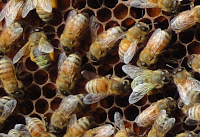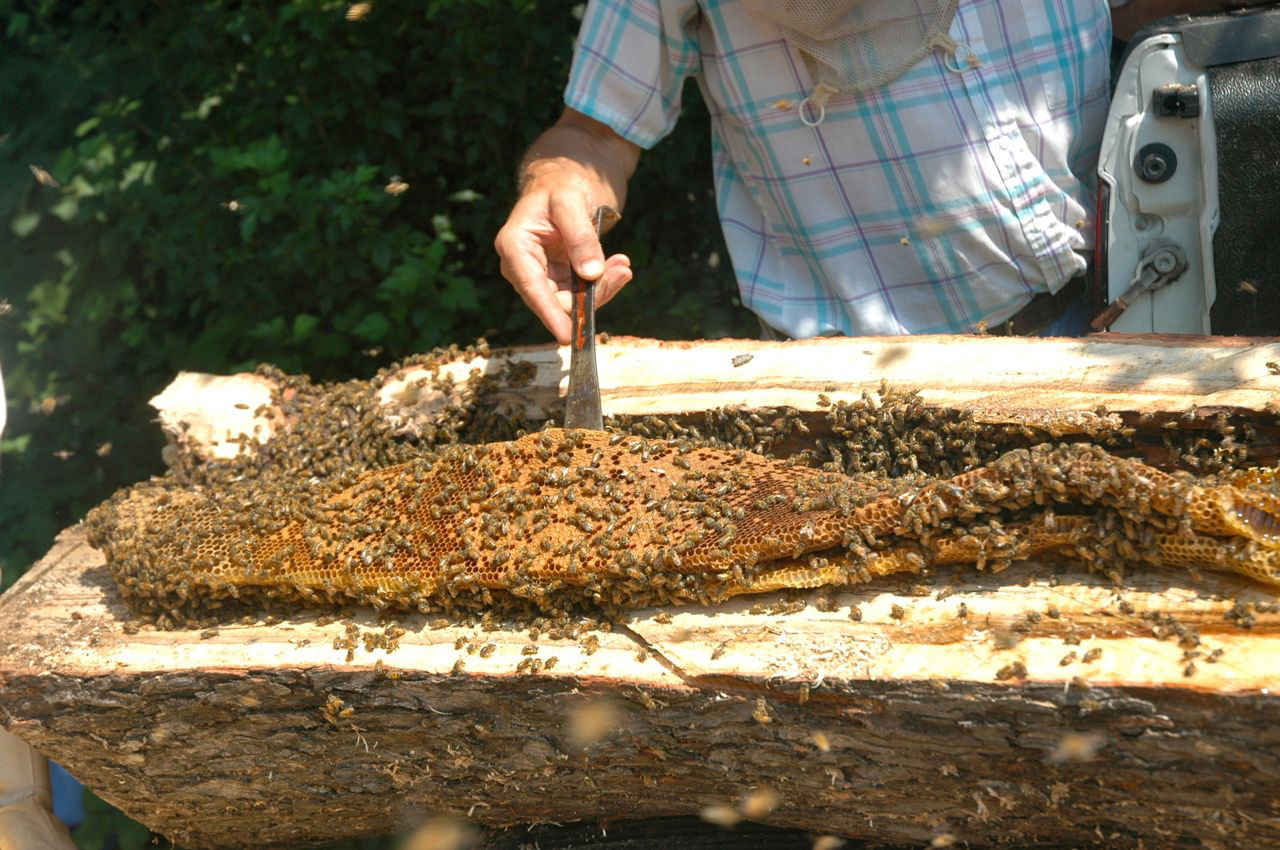 |
| Sasha II |
Other frames in that box have similar small areas of covered brood but without as many drone cells as in this photo. I used the flash so that you can see there are lots of cells containing larvae, older in the middle and younger as you move out. Sasha II just needs to get going.
 |
| Sasha I |
I know the bees will sort it out... they have four dry queen cups ready to employ should they decide Sasha II is not going to work out. And for now, Sasha I remains the better layer but that isn't saying much. The lack of orientation flights is noticeable!
I've kept the feeder on and they take it heartily, but there is no real honey production yet. September 1st is the landmark date in my area to really push the feed buildup for the winter. There are four partial frames of in the OV hive's honey super so I can always move some to the Sasha hive. I have options ready for when the bees let me know what they need. There is still time.
Adding a comical touch to my morning inspection were green bees in the hive! I'm not versed enough yet to know which plants produce which color pollen, but the bloom chart for my area shows dandelions, bugloss, clover, thistle, milkweed, mint and more are in bloom. Could these be mint green bees? (te he he)
Adding a comical touch to my morning inspection were green bees in the hive! I'm not versed enough yet to know which plants produce which color pollen, but the bloom chart for my area shows dandelions, bugloss, clover, thistle, milkweed, mint and more are in bloom. Could these be mint green bees? (te he he)













